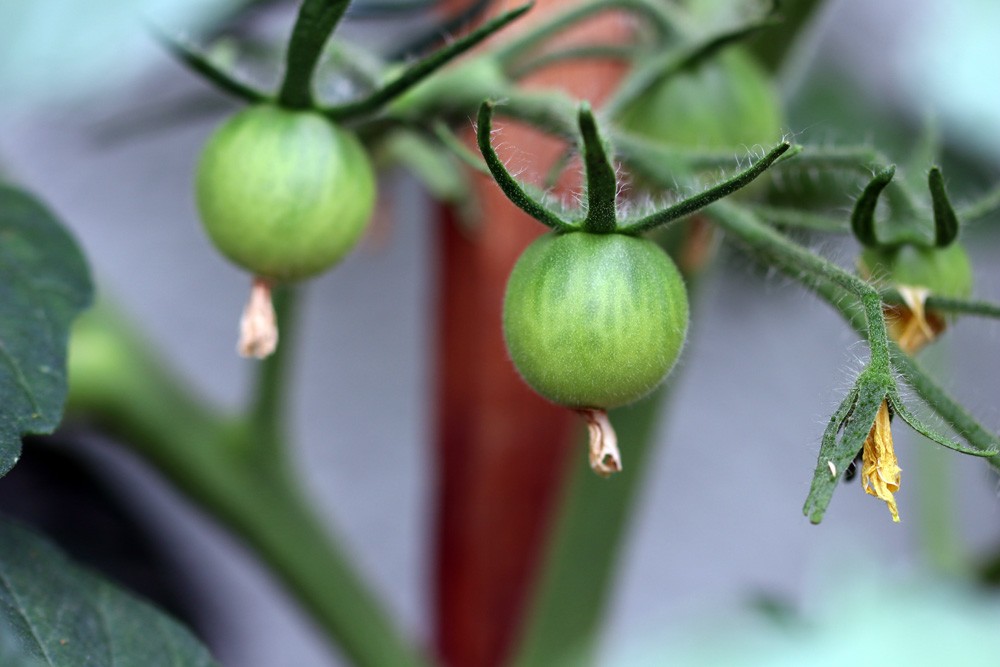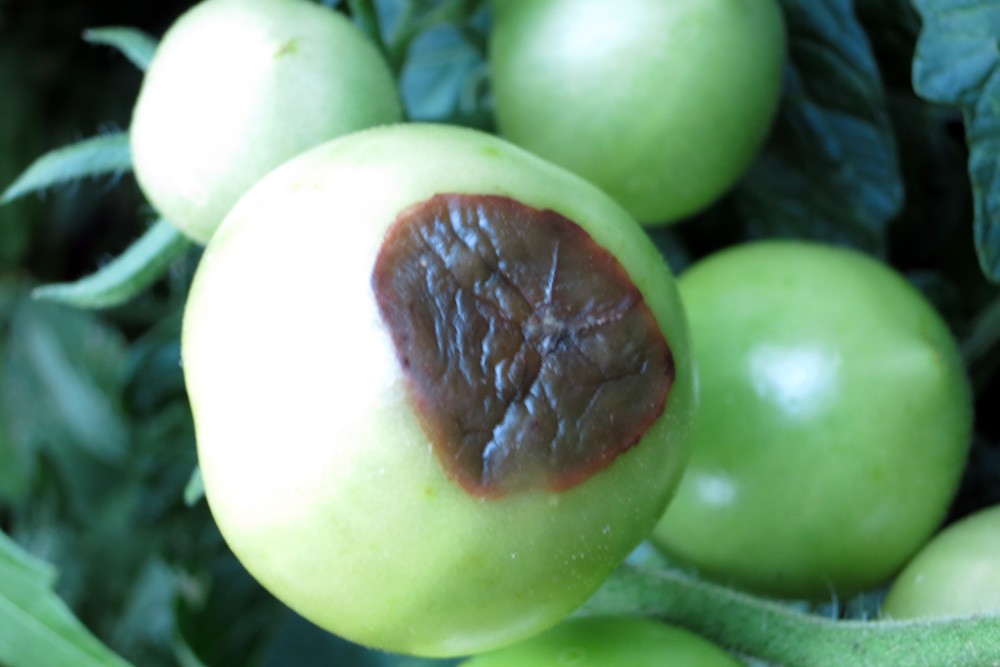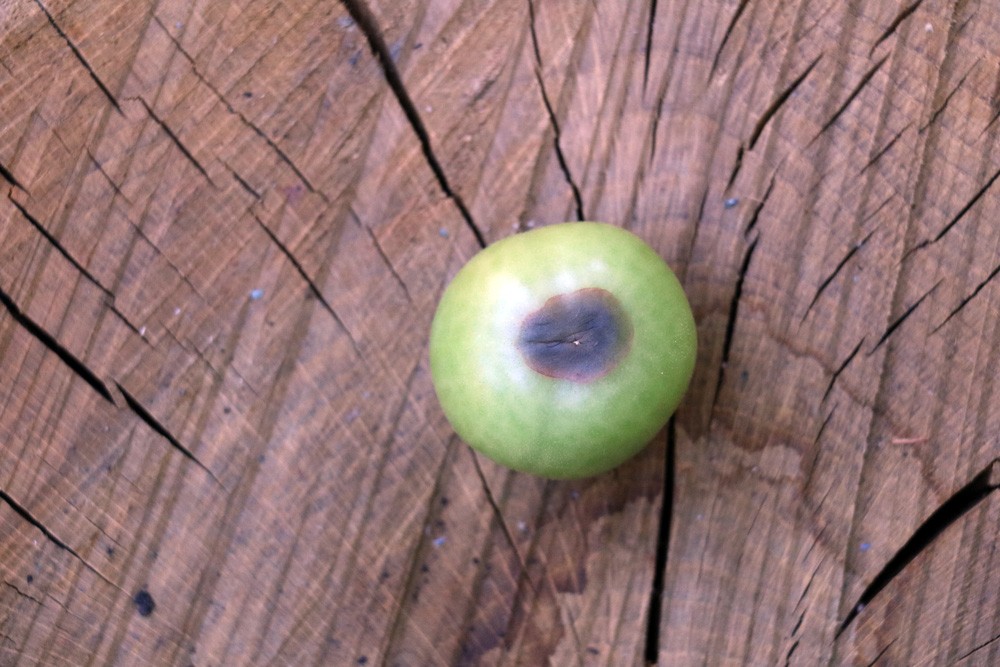Tomato proves to be a sensitive plant. Thus, in addition to the pleasure of selection and a high-yielding duck from their own garden, the grower has to deal with diseases of the popular fruit again and again. What exactly this disease is and how it affects the harvest of tomatoes, will be discussed in more detail here.
Contents
Symptoms of the disease
In some years, small, brownish, watery spots appear at the beginning of the blossom. These are located at the lower end of the fruit. They are located at the lower end of the fruit, opposite the stalk. Gradually these spots spread. They turn brown to black and partially harden, the affected areas collapse.
- watery spots at the base of the flower
- spreading of the affected area
- brown to black discoloration, often hardened
- sometimes black necroses on old leaves
- infestation only on single tomatoes
Rather rarely, the old leaves of the respective tomato plants are also affected. Here, black spots form on the leaf and it eventually dies. Likewise, it is possible, but in experience rarely occurred, that shoot tips wither. The leaves are then deformed and the plants lag behind in growth. Much more often, the plant makes a healthy impression and only individual berries are affected.
Cause of blossom end rot
It is not one hundred percent clear where this disease comes from. The only certainty is that it is neither a fungus nor a virus. Scientists believe that it is a metabolic disorder in tomato plants caused by a lack of calcium. The nutrient deficiency causes the affected cell walls to collapse and die. Calcium is brought into the plant through water uptake. Since the fruits naturally get less of the nutrient than the rest of the plant, the effect is also seen at the lowest end of those first.
Preventive measures

Calcium deficiency in the tomatoes can occur for several reasons. Once there is the soil. Already during the preparation should be made sure that the soil is not acidic. In order to find out at which pH value the future home of the tomato plants is, the hobby gardener can give a sample to the responsible laboratory, which costs him around 20 euros or he buys a pH test in the hardware store or garden center. Depending on the design, pH testers are available from 5 euros. Great previous knowledge is not required for the application. If it turns out that the pH value is too low, it can be improved, for example, with rock flour. Carefully mud into the plant, so that the roots do not come to harm. Eggshells also contain a lot of calcium.
- check pH before planting
- pay attention to the balance of nutrients
- treat acidic soil with rock flour, algae lime or something similar
In addition to too low a pH, excess nitrogen, magnesium, sodium or potassium can cause tomato plants to be unable to absorb enough calcium. Accordingly, it is important to fertilize in a balanced manner and also keep an eye on calcium levels later in growth. Excess nitrogen leads to increased leaf growth, while excess of other nutrients leads to growth disorders.
What else to watch out for
Calcium uptake occurs via water transport from the soil. The nutrient is brought to the leaves and fruit via the capillaries of the roots. Thus, the amateur gardener should make sure that there is no deficiency caused by a long drought of the soil. Tomato plants like regular, but not too frequent watering.
- Water regularly
- do not water too often
- provide sufficient air circulation
The supply of liquid and nutrients from the soil is also regulated by evaporation in the upper parts of the plant. In addition to drought, high humidity can contribute to blossom end rot, as in this case the evaporation process is impeded. Special attention is paid here to plants grown in greenhouses. Both sufficient watering, and a large air circulation prevent the disease. The tomatoes themselves evaporate less moisture than the rest of the plant. This explains, among other things, why in the vast majority of cases only the fruits are affected.
When the first symptoms appear

If the first signs of blossom end rot are visible, it may help to treat the plant with a special calcium fertilizer. Various suppliers carry this product in their range. It is recommended to apply the liquid directly to the foliage, as this ensures faster absorption.
- Apply liquid fertilizer to the leaves
- Use rock powder more often
- Add lime nitrate to the irrigation water
Another option is to add calcium nitrate to the soil. To do this, dissolve 30 grams of the product in a liter of water and water the tomatoes with the solution. Furthermore, some gardeners have had good experiences with the administration of Schuessler salts. The number 2 in the potency D6 is then applied.
What to do with infested fruit?
Unlike blight, which is caused by a fungus and can spoil the entire plant, in blossom end rot the berries remain edible. This is because it is “only” a nutrient deficiency. If you generously remove the sunken brown or black areas, you can safely eat the remaining tomato. In most cases, there is not even a loss of taste. The flesh of the fruit is not affected.
Are there resistant varieties?
No.
No tomato plant is really immune to a deficiency symptom. However, strongly growing varieties are more likely to be affected. On the one hand, because the path for the calcium is longer, on the other hand, because it can easily come to a nitrogen surplus, which then stimulates the growth even more. Known for their susceptibility are beef tomatoes such as: “Caucasian Liane”, “Red Boar” and “Azoycha”.


